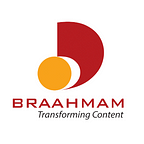Understanding the Different Types of Machine Translation Post-Editing
Machine translation (MT) has become vital for removing linguistic barriers in today’s fast-paced, globalized world. Machine translation can translate large volumes of text quickly, but the final product must usually be improved to reach the high standards consumers and businesses expect. We call this process post-editing (PE). Post-editing involves human editors reviewing and making corrections to improve the accuracy, fluency and general quality of MT output. Let us examine the many forms of machine translation post-editing, highlighting their unique features and uses.
1. Light Post-Editing (LPE)
Light post-editing focuses on correcting only the most critical errors in the MT output to make the text understandable. The goal is to achieve sufficient accuracy and readability without striving for perfection. LPE is often used when speed is of the essence and the text is for internal use or purposes where a polished translation is not required.
Key Characteristics:
- Correction of significant grammatical errors and mistranslations.
- Ensuring the text is comprehensible and conveys the intended message.
- Minimal stylistic or syntactic changes.
- Quick turnaround time.
Applications:
- Internal communications.
- Informal content such as emails or instant messages.
- Preliminary translations that are to be further refined later.
2. Full Post-Editing (FPE)
Full post-editing aims to produce high-quality translations comparable to those done by professional human translators. This process involves a thorough review and correction of the MT output, ensuring that the text is accurate, fluent and stylistically appropriate for its intended audience.
Key Characteristics:
- Comprehensive correction of all errors, including minor grammatical issues and awkward phrasing.
- Stylistic adjustments to match the target audience’s expectations.
- Consistency in terminology and tone.
- Higher time and effort investment compared to LPE.
Applications:
- Content intended for publishing, such as websites, manuals and marketing materials.
- Legal and technical documents.
- Customer-facing communications.
3. Targeted Post-Editing
Targeted post-editing is a tailored approach that focuses on specific aspects of the text that are critical to the client’s needs. This type of post-editing can blend LPE and FPE, with particular emphasis on specific sections or types of content within the document.
Key Characteristics:
- Focus on correcting sections that require high accuracy, such as product names or technical terms.
- Balancing speed and quality based on the client’s priorities.
- A customizable approach to meet specific requirements.
Applications:
- Specialized industry documents where certain parts are more critical than others.
- Projects with varying quality requirements across different sections.
- Documents that can be accepted with a mix of both high and lower-quality translations.
4. Adaptive Post-Editing
Adaptive post-editing leverages advanced technologies such as artificial intelligence and machine learning to continuously improve the quality of MT output during the post-editing process. This type involves real-time feedback loops where the system learns from the edits made by human post-editors and adjusts its future translations accordingly.
Key Characteristics:
- Real-time learning and improvement of MT systems.
- Increased efficiency and reduced post-editing effort over time.
- Enhanced consistency and quality of translations.
- Requires integration with adaptive MT systems.
Applications:
- Large-scale translation projects with ongoing updates.
- Companies are looking to improve their MT systems over time.
- Dynamic content such as news or social media posts.
Best Practices for Effective Post-Editing
Regardless of the type of post-editing, several best practices can enhance the quality and efficiency of the process:
- Clear Guidelines: Establish clear post-editing guidelines to ensure consistency and meet quality standards.
- Training: Provide adequate training for post-editors to familiarize them with the MT system and post-editing tools.
- Feedback Loops: Implement feedback mechanisms to improve both the post-editing and MT systems continuously.
- Quality Assurance: Incorporate a robust quality assurance process to catch any errors that may have been missed during post-editing.
In summary
Post-editing is crucial to the machine translation workflow, bridging the gap between automated translation and human-quality output. By understanding the different types of post-editing — light, full, targeted, and adaptive — businesses can choose the best approach, ensuring efficient, accurate and high-quality translations. As MT technology continues to evolve, post-editing will remain integral in delivering seamless multilingual communication in our increasingly connected world.
